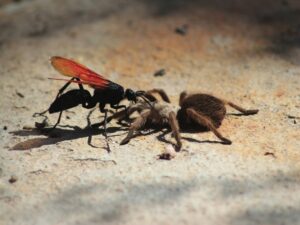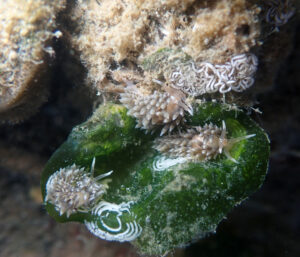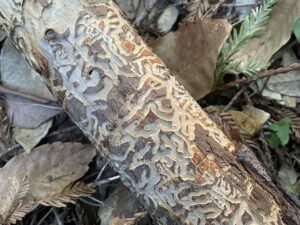Edward Ross has visited every continent except Antarctica in pursuit of his passion for studying, collecting, dissecting, classifying, naming, photographing, and deeply appreciating insects. In between his globe-trotting adventures, the 89-year old curator emeritus of entomology at the California Academy of Sciences has done a fair bit of his work on the several acres of terraced hillside around his Mill Valley home. On a sunny afternoon in May, he took me on a hike along the flagstone switchbacks in his steep backyard beneath Mount Tamalpais, providing a nonstop natural history lesson. This is not a man who plans to slow down any time soon: Ross says he deplores sleep as “a form of death,” and then explains his plans to collect more flagstone from local creek beds to finish a small section of the trail we’re walking on.
In his 58 years here, Ross has absorbed about as much of this complex landscape as a person could in a single lifetime. He has an intimate knowledge of the insects, the plants with which they interact, the kinds of soil that support the plants, and even the underlying Jurassic rock formation that created the soil.
BN: You are the world’s leading expert on a particular order of insects, the embiids, or web spinners. How did you come to choose one group of insects from so many?
ER: By the time I graduated from high school (Oakland Tech), I had a collection of 60,000 well-mounted, well-labeled beetles. At UC Berkeley, I got interested in a family of beetles, the Histeridae, and published papers on them as a student. When I had to take a course in insect anatomy, I decided to section the front feet of a local web spinner, a member of the order Embiidina. Each foot is swollen with about a hundred globular glands, each of which has its individual ejector hair, so the web spinners spin silk just like they’re shadowboxing. That’s their edge for survival. The females are wingless and move about in silken galleries. From the moment they come out of the egg, they can spin silk. I took a spring trip to canyons around Palm Springs and found a new species of this group, endemic to Southern California, Arizona, and down into Mexico. I decided to do my Ph.D. thesis on the anatomy of web spinners. It turned out to be fascinating new research, and anybody with an ounce of adventure likes untrodden territory. After I got my Ph.D. in May 1941, I joined the staff of the California Academy of Sciences. Shortly thereafter I started photography.
BN: How did you integrate photography into your work?
ER: I was very anxious to explain the insect world in my early academy days. I used to give talks, and I recognized that there was a need for live-action insect photos. So I decided to take up photography. I wrote and illustrated an article for the academy’s magazine, Pacific Discovery (now California Wild), called “How to Photograph Insects.” Later I produced an 80-page booklet that included more information on insect photography and how to collect insects.
BN: You’ve lived on this land for almost 60 years. What are the most remarkable changes that you’ve seen?
ER: I don’t think succession [from one habitat type to another] is remarkable. It’s normal. If you live on a piece of property for a half a century, you will see your friends, the plants, grow old with you, and also change their character and associates. Places once sunny are now shaded, so the plants that need sun can no longer live there. When I first got this property, its oaks were too small to shade my daughter’s quarter horse. Now the trees are gigantic, and the chaparral has been shaded out. There are gradual rather than spectacular changes. You have to be aware of the details.
BN: What would you say to people who ask, “Why should I pay attention to bugs?”
ER: I wouldn’t want them to use the word “bugs.” I don’t think most people care much about insects. They are not in people’s lives unless they bite or scare you. It’s hard to popularize things that don’t appeal to the great mass of people, and people don’t realize the importance of insects in the web of life. I believe that the ultimate religion is environmentalism, reverence for nature. A lot of people haven’t heard the “word of the Lord” on the value of insects. I want to convert them, so they’ll appreciate insects and the wonder of nature.

.jpg)



